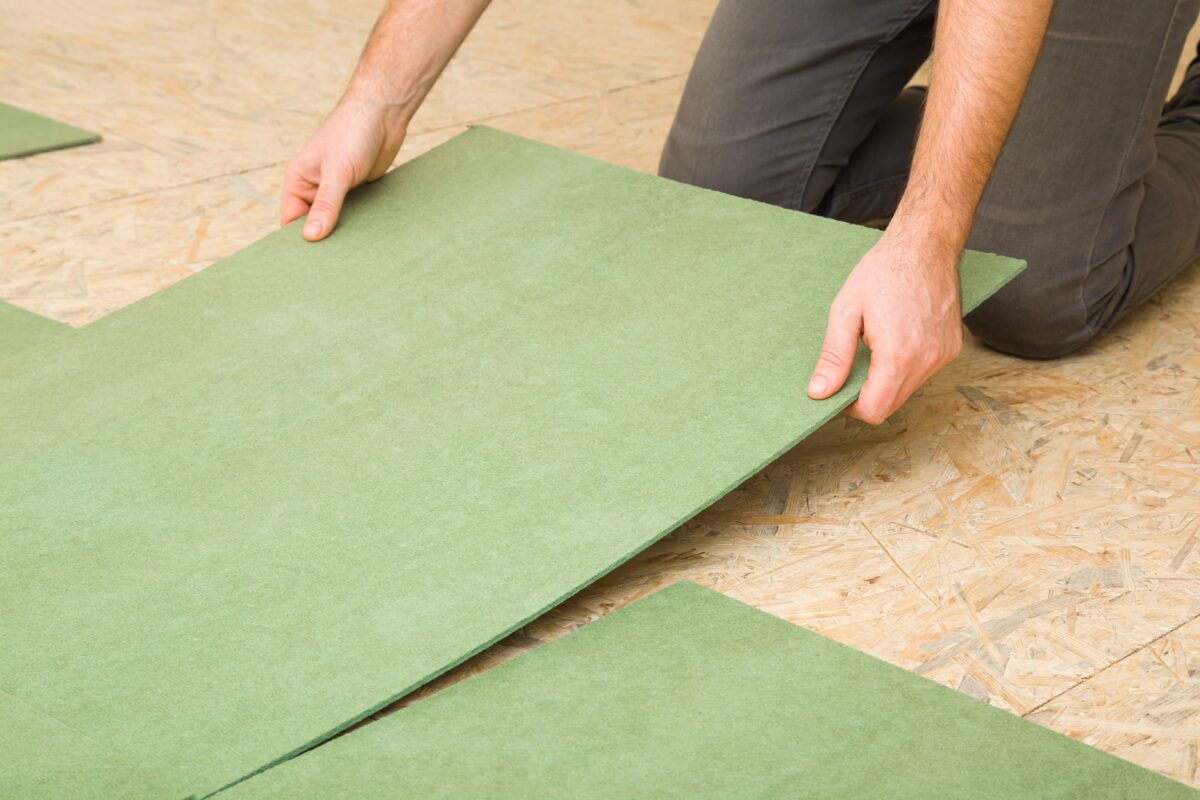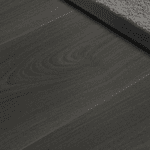
Blog
What is the best thermal underlay to reduce heating bills?

If you’re looking to make your home more energy efficient, opting for a thermal underlay is one of the best ways to lower your energy bills because it reduces heat loss through the floors and makes your home a more comfortable place. The money you invest in thermal underlays pays itself back over time through the heat loss prevented, and this will also be reflected in your property value.
But which thermal underlay is the best? The answer is: it depends on your current flooring and what else you require from an underlay. You can view our thermal solutions by clicking the links in the article below.
How is heat lost through floors?
Heat loss through the floor is one of the most common problems with older housing stock in the UK. Carpet fitters of years gone by often thought the carpet alone was enough to retain heat and prevent the cold floors of timber and concrete beneath from bringing down the temperature of your home.
Today we understand that an insulating layer of underlay between the floor and subfloor is essential to prevent heat loss through the cold ground beneath your feet. Heat in your home literally seeps through the floor to the cold concrete or timber beneath and is lost this way. Also the old adage that warm air rises is true, so you’ll feel the chill of cold floors without the proper insulating underlay.
What is an underlay’s TOG rating and why does it matter?
Now you know you need an insulating underlay beneath your carpet, wood, or LVT flooring, you need to understand more about the underlays themselves so you get one that actually does the job of preventing heat loss well, helping you stay warm in your home.
To make the right choice you need to understand TOG ratings.
The higher an underlay’s TOG rating, the better they are at being efficient with energy and reducing heat loss. Up to 20% of the heat you generate in your home will be lost through uninsulated floors, and having good thermal insulating underlay beneath your floors can potentially reduce it to 0%.
TOG ratings of 1.0+ are generally recommended for those looking for some insulating effect. Those over 2.5 are considered particularly effective.
Can thermal underlays be used with underfloor heating?
That depends on what you mean. Underlays offering minimal thermal insulation can be used with underfloor heating, but not to any great effect. The thing is, underfloor heating has to be installed beneath the underlay, so in order for the heat to pass through, the underlay will need to allow it.
Having an underlay with a high tog rating (meaning it’s great at insulating heat, making it difficult to pass through) actively prevents the heat from the underfloor heating from getting to the top flooring layer. Essentially, your underfloor heating would do great at heating the concrete beneath your floor, but a pretty poor job of actually warming your home.
In order for your underfloor heating to work you’ll want a low TOG rating of 0.35 or less. So whilst underlays can work with underfloor heating, thermal/insulating underlays can’t because they directly oppose each other in what they’re trying to achieve.
What makes a good thermal underlay?
Becoming energy efficient means having measures to reduce heat loss across all areas of the home. A thermal underlay is a valuable, highly cost-effective strategy to stop the cold rising through the floors, and keep heat within the room. Heat loss through the floor is a common problem in older, inefficient homes in the UK, but a thermal underlay is capable of retaining that heat,
A good thermal underlay will always have the following qualities:
- Reduce heating bills
- Keeps your floor warm by trapping cold air
- Preserves carpet and floor coverings
Very few underlays are solely and specifically designed for heat retention. Clients may also have some of the following additional benefits depending on the insulating underlay they choose:
- Sound insulation
- Moisture protection
- Movement prevention
What is the best underlay to reduce energy bills for carpets?
The leading thermal carpet underlays all protect the warmth of a carpet, as well as their plushness/rigidity depending on the type:
- Pure SHD (Super High Density) 11mm – This is the premium polyurethane foam underlay. This underlay has it all – density, comfort, thermal insulation and sound reduction. A favourite for customers with cut-pile luxury carpets, or high-end loop-pile types.
- Thick and strong – Its profile (available in either 9 or 11mm) makes it thick and plush for underfoot comfort, all whilst being highly resilient through its ability to combat compression.
- Sound insulation – This insulating carpet underlay also has high impact sound reduction built in.
- Superior insulation – This boasts the achievement of being in the highest TOG rating bracket of PU foam underlays (3.04). This allows you to potentially block up to 20% of all heat loss within the home, making it amongst the most energy efficient thermal carpet underlays on the market.
- FloorSure Platinum – The top of the FloorSure series, designed for light traffic areas. Best used in bedrooms, living rooms, etc – built to support fine-textured cut-pile carpets where a slight “spring” enhances resilience, and low-profile loop-pile carpets susceptible to damage.
- Thickness – 12mm PU foam provides a softer underfoot experience whilst also reinforcing carpets against light traffic.
- Acoustic insulation – 44 dB sound reduction keeps a quiet home.
- Thermal performance – Amongst the best thermal carpet underlays, at 2.95 tog rating.
- Easy handling – Ideal for delicate installations.
What is the best thermal underlay for wood and laminate flooring?
Wood and laminate both suffer from being naturally cold floors, and sometimes this is exacerbated by concrete subfloors beneath. The following are some underlays that address these concerns offering you a more comfortable experience whilst increasing your home’s energy efficiency.
- FineFloor TechniBoard– A 5mm XPS material underlay known for it’s lightweight nature yet durable strength, this is perfect for medium traffic areas that need better heat insulation.
- Clean installation – It’s a dust and fibre free material, making installation easier for DIYers and reducing allergy concerns.
- Strong TOG rating – The 2.15 TOG rating here is unusual for a wood/laminate underlay, and it’ll do a great job of reducing heat loss in your home through your floors.
- Sound reduction – This underlay also specialises in sound reduction with high impact sound tolerance dulling loud noises to create a more peaceful space.
- FineFloor FibreBoard (7mm) – This 7mm underlay is made of traditional wood fibres and is designed to support areas with medium traffic whilst offering heat insulation and sound reduction properties.
- High TOG rating – This has the same TOG rating as the TechniBoard above at 2.15, impressive for an underlay designed for wood floorings.
- Greener option – FibreBoard is made of natural wood fibres making the flooring 100% natural and recyclable.
- Basement-safe – You might not be planning on using this underlay in a place as cold as your basement, but its good to know that it’s approved for use here, showing how effective its insulating properties are.
What is the best insulating underlay for cold floors offering acoustic solutions?
For many people, acoustic and thermal underlays go hand in hand, because you want to achieve a more comfortable home in multiple ways – both by making your home more peaceful and making it warmer. The best QA Flooring underlay for both is:
- E-Board Timber, Concrete & Pro (depending on your needs) – The E-Board series is designed for high traffic areas so they’re perfect in commercial spaces or HMOs, apartment buildings, etc. They reduce sound whilst helping the space retain its heat.
- Different purposes – Timber & Pro are great with timber subfloors, whilst Concrete is made for a concrete subfloor, so you’re sure to find something that works.
- Heat insulation – All offer excellent heat insulation, with TOG ratings all above 2.5.
- Sound reduction – Both airborne (47-54 dB) and impact (53-57 dB) sounds are controlled for your peace here.
Work with QA Flooring Solutions today
Heat loss through the floor of your home is a real problem in the UK. Get the right solution though, through an effective thermal underlay, and you’ll eliminate that problem, cutting down your energy bills and making your home a more energy efficient and comfortable place to live.
Look for underlays with a high TOG rating to ensure they’re capable of retaining the heat you need, and you’ll massively cut down the effect of heat loss in your home. View our thermal solutions today and see what we have on offer to help you.


